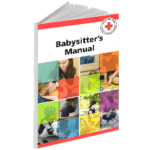How to keep kids safe during in-person Babysitting and Home Alone classes
 After several months of virtual instruction of Babysitting and Home Alone courses to young people using Zoom, SOS 4 Kids is getting ready to go back to the classroom. This will happen as two million Ontario students prepare to go back to school in September. Many lessons on how to keep kids healthy have been learned from how summer camps and in-person first aid classes have been operating since the beginning of the summer.
After several months of virtual instruction of Babysitting and Home Alone courses to young people using Zoom, SOS 4 Kids is getting ready to go back to the classroom. This will happen as two million Ontario students prepare to go back to school in September. Many lessons on how to keep kids healthy have been learned from how summer camps and in-person first aid classes have been operating since the beginning of the summer.
There have been almost no cases of COVID-19 coming out of summer camps and zero cases reported from first aid courses. This is due in large part to the implementation of important preventative measures including creating cohorts or small groups and controlling the environment by means of screening measures, hand sanitizing stations, wearing masks, respecting social distancing and minimizing the sharing of equipment where possible.
As much of Ontario was in lockdown in June, SOS First Aid was planning to re-open first aid classes in Stoney Creek and Oakville. “When we began opening up first aid classes, it was early on in the summer and we were very nervous about resuming in-person operations,” said Velma Ganassini, founder SOS First Aid and co-founder of SOS 4 Kids. At the end of June, the province was at the beginning of phase 2 reopening and the number of people that could gather was limited to 10. SOS First Aid’s classes had 9 participants and 1 instructor congregating at the Meeting House in Oakville with one person per 6 foot table. All were required to wear a mask and cleaning of equipment and frequently touched surfaces was enhanced and cleaned more frequently.
On August 18, Mississauga opened the Living Arts Centre with SOS First Aid as its only tenant in an effort to roll out phase 3 of reopening. “We were really thankful and lucky that the city of Mississauga selected SOS First Aid as the tenant to test reopening with enhanced safety protocols to residents. We have been operating almost daily at the facility with a combined total of 40 participants divided into 3 cohorts,” comments Ganassini. “There have been no issues and everyone has been very respectful of the guidelines.”
What SOS First Aid has learned is that you can operate lifesaving training programs safely, you can implement health and safety measures, and you can adapt programming and deliver first aid and CPR courses that still meet workplace and school requirements during COVID. Returning to the classroom has also helped to bring some level of normalcy back to participants, instructors and the industry as a whole.
The measures taken by SOS First Aid has helped to shape the guidelines for SOS 4 Kids by setting an example of how to safely return children to the classroom. There will be cohorts of up to 15 youth who will not intermingle. This will be a really important piece for keeping track of kids in our classes and ensuring everyone is safe. There will be screening questions for parents at the start of every class. If children fail screen questions, they will not be permitted to enter the classroom.
SOS 4 Kids will control the in-person classroom environment by requiring that children wear masks when in class, increasing sanitation and ensuring that sharing of supplies is limited. We feel confident that returning to the classroom by using these measures will keep kids safe and healthy.
However, not all parents are ready to send their children back to the classroom. For this reason SOS 4 Kids will continue to offer parents the option of either in-class or remote learning. It is important that children and parents feel comfortable with their decision. Whether in-person or virtual, it is important that children are in a place where they can continue to learn in an environment where they feel safe while connecting with other children their own age.

